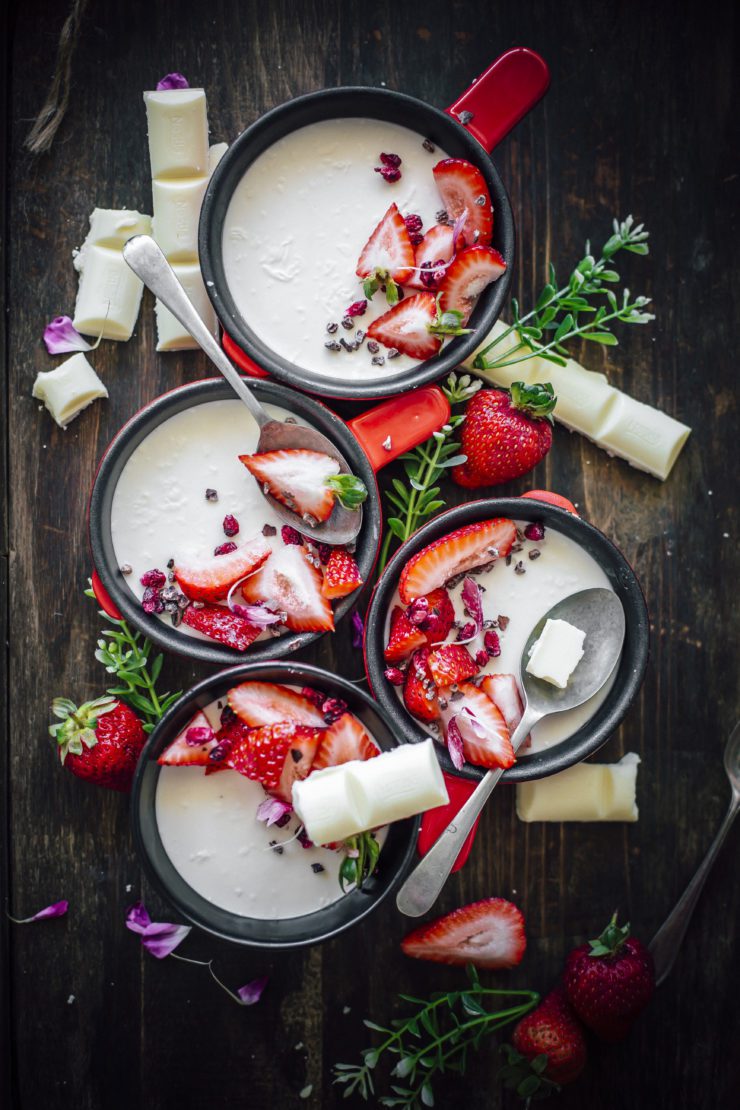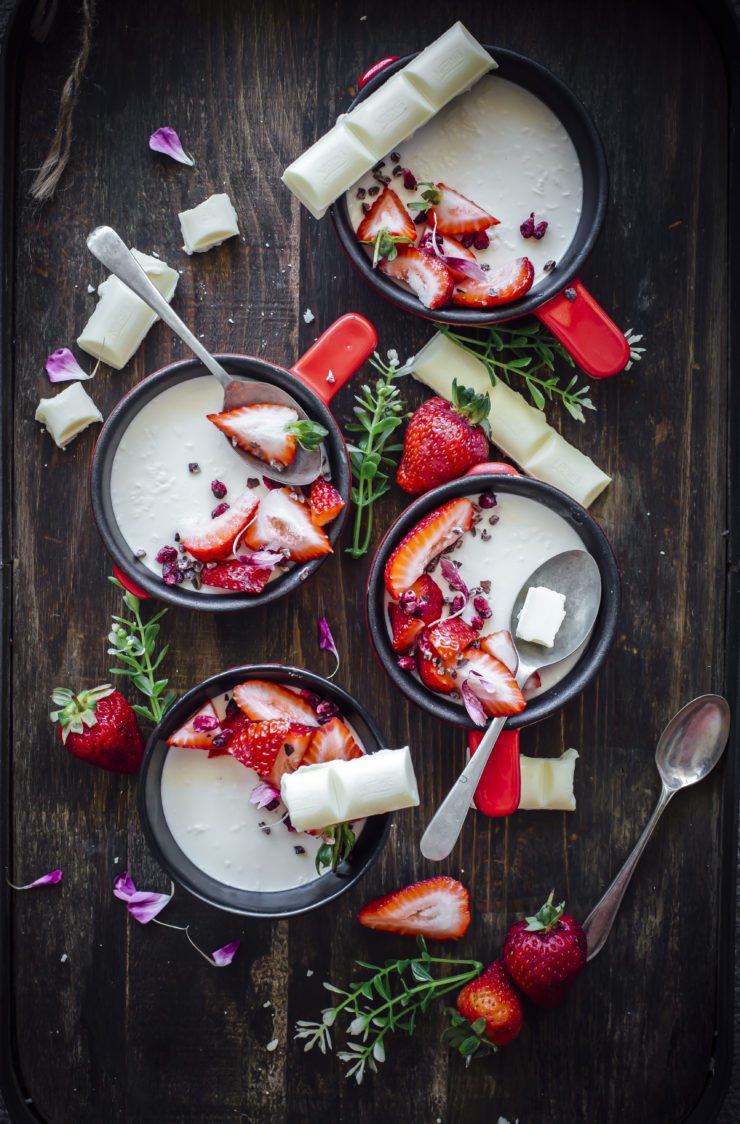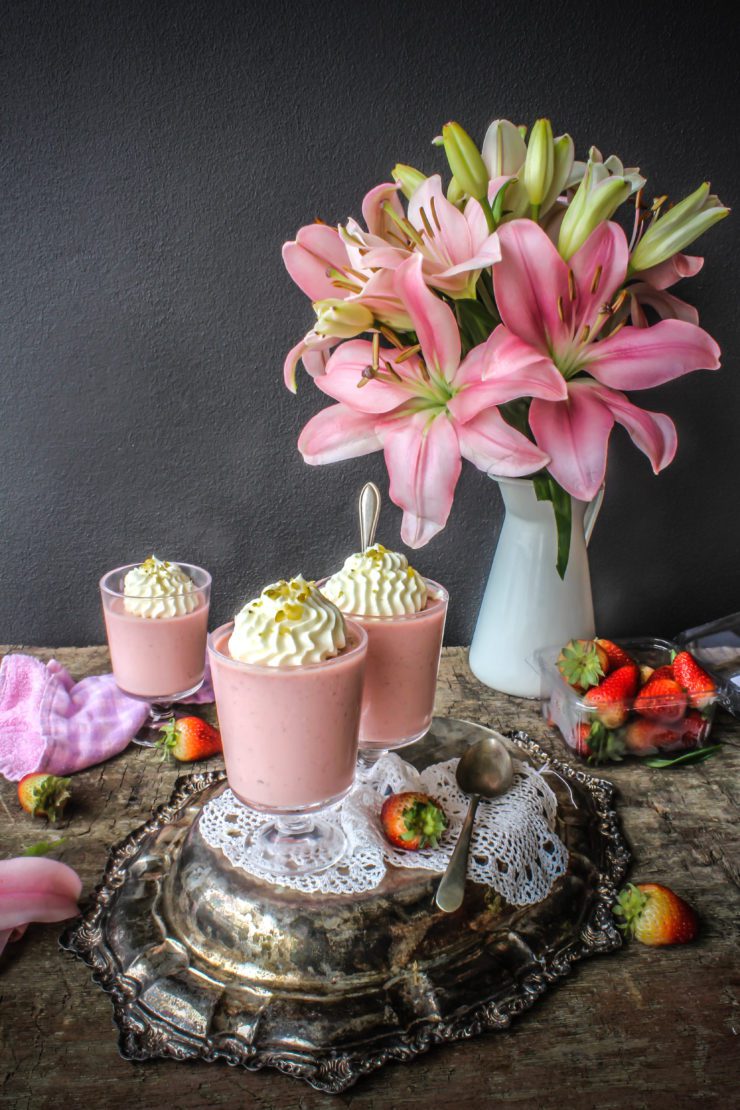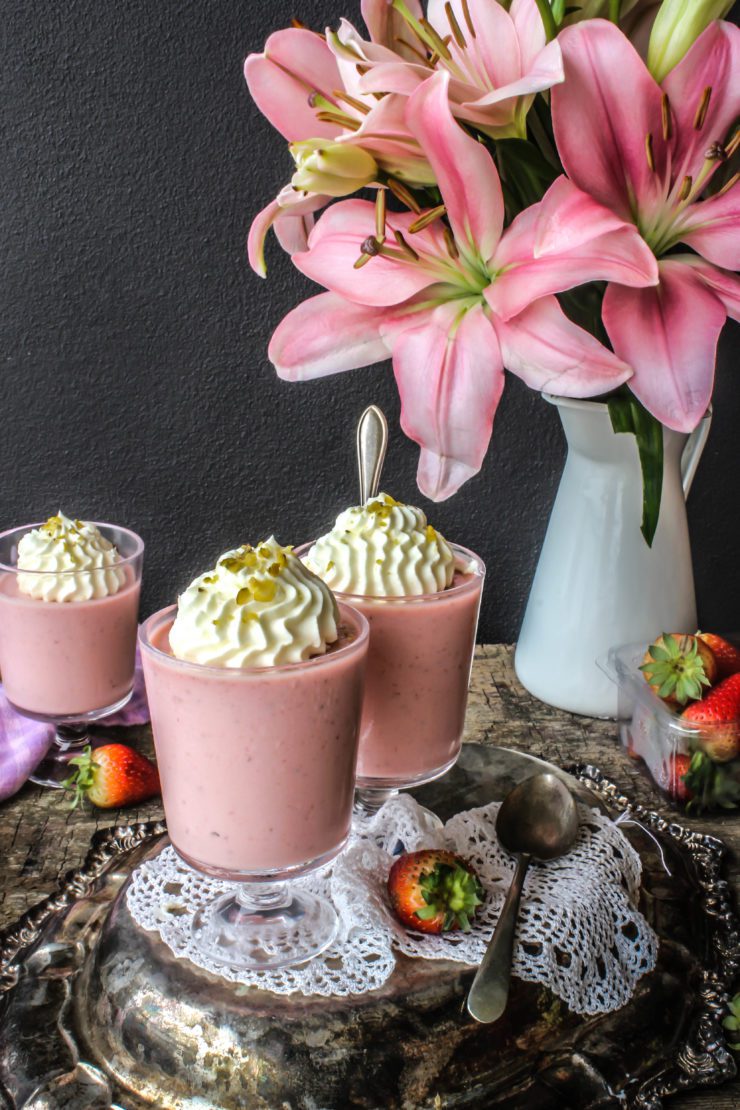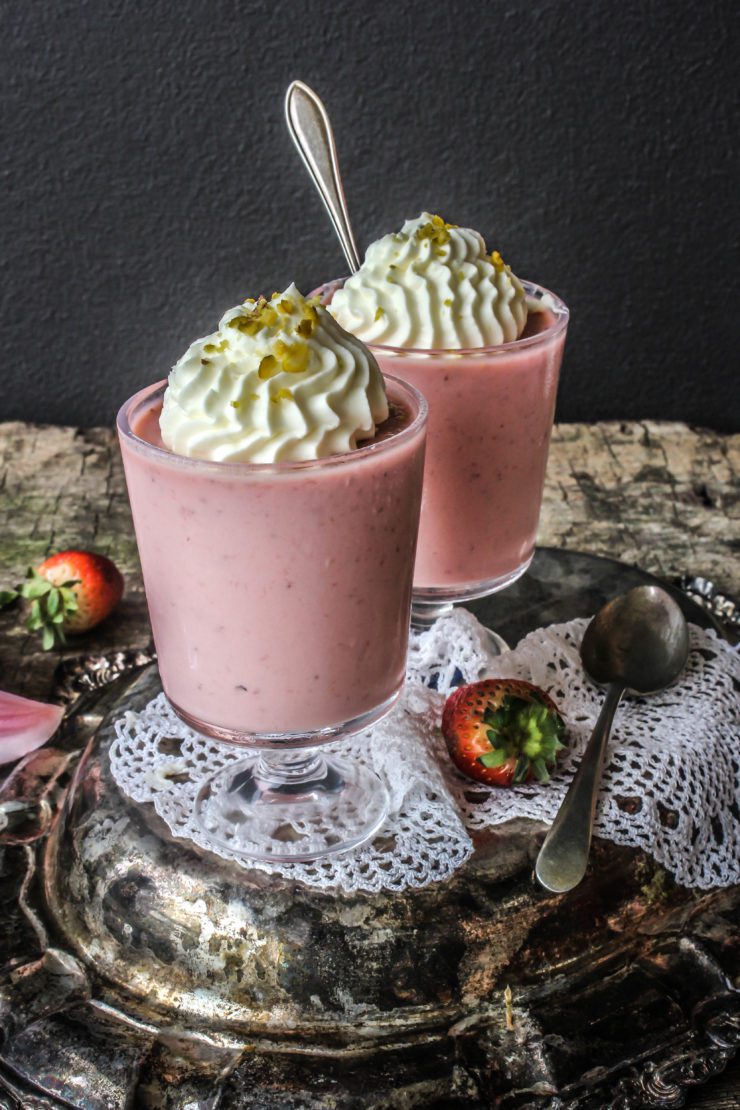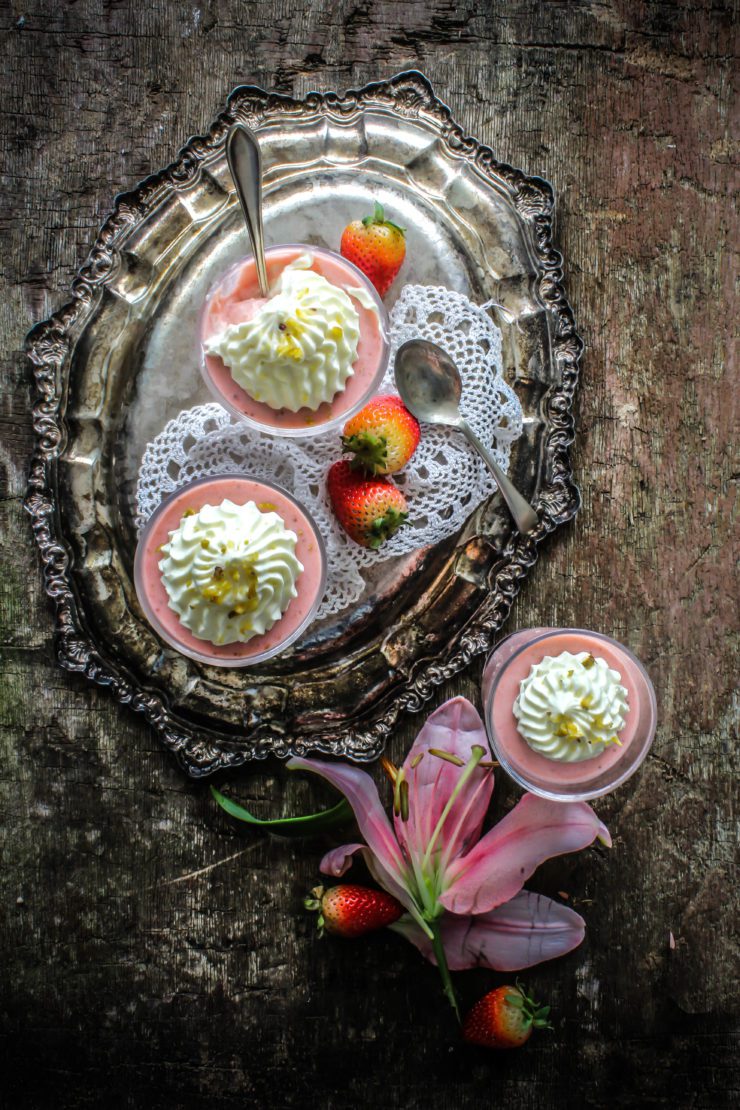Delicious Panna Cotta Tarts with a crumbly shortbread crust and a basil infused creamy filling. Perfect little treats for a high tea, special occasion or a weekend indulgence.
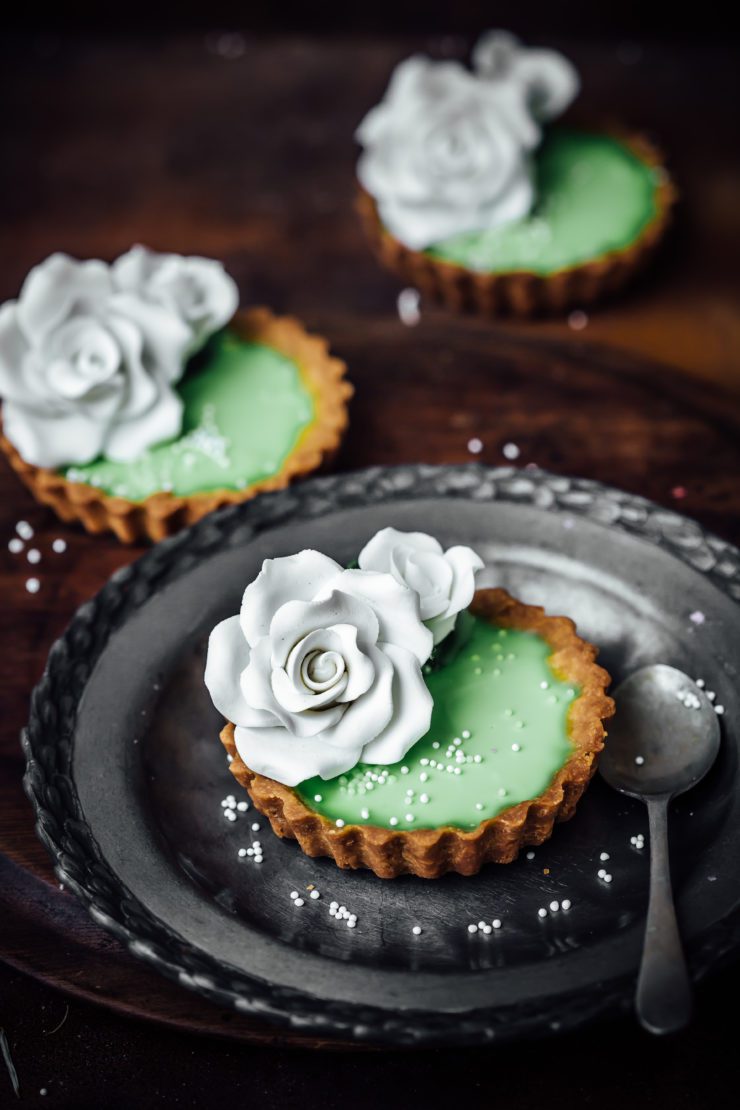
Herbs are often associated with savory food but their delicate flavour and refreshing aromas go well with sweet treats as well. Much like spices that are used abundantly in desserts, herbs when used in the right proportions can elevate a dessert to a new level. Many years ago, I had tried a basil infused Creme Brule. It was part of a trio of Creme Brulees at a fancy restaurant (the others were white chocolate and cinnamon) but the one with basil appealed to my taste buds the most. After that I came home and made a basil pots de creme (which is like a cousin of the Creme Brule) but somehow the flavour got masked in the richness of the custard.
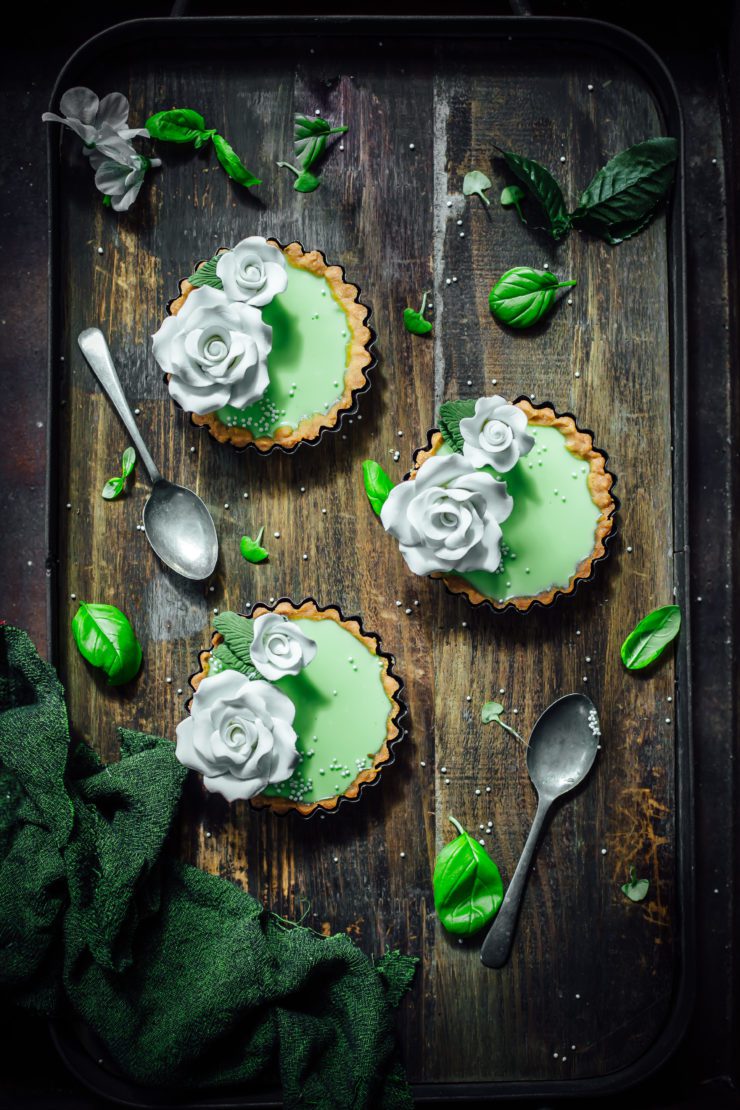
A panna cotta is usually light, refreshing and immensely versatile. If you have noticed lately, I made a lot of panna cotta tarts. With each one, I sort of feel that I’m beginning to understand it better. What is so complicated in a Panna Cotta, you may ask. Well, Panna Cotta is one of the easiest things to make in the culinary world. But a panna cotta tart is not the same. When the milk based filling is made to set inside a pastry crust, there are quite a few things that could go wrong. I’ve had my share of wet crusts, filling leaking out of the pastry and fillings that won’t stay out of the refrigerator too long on a warm summer day meaning a totally soggy crust instead of a crumbly one.
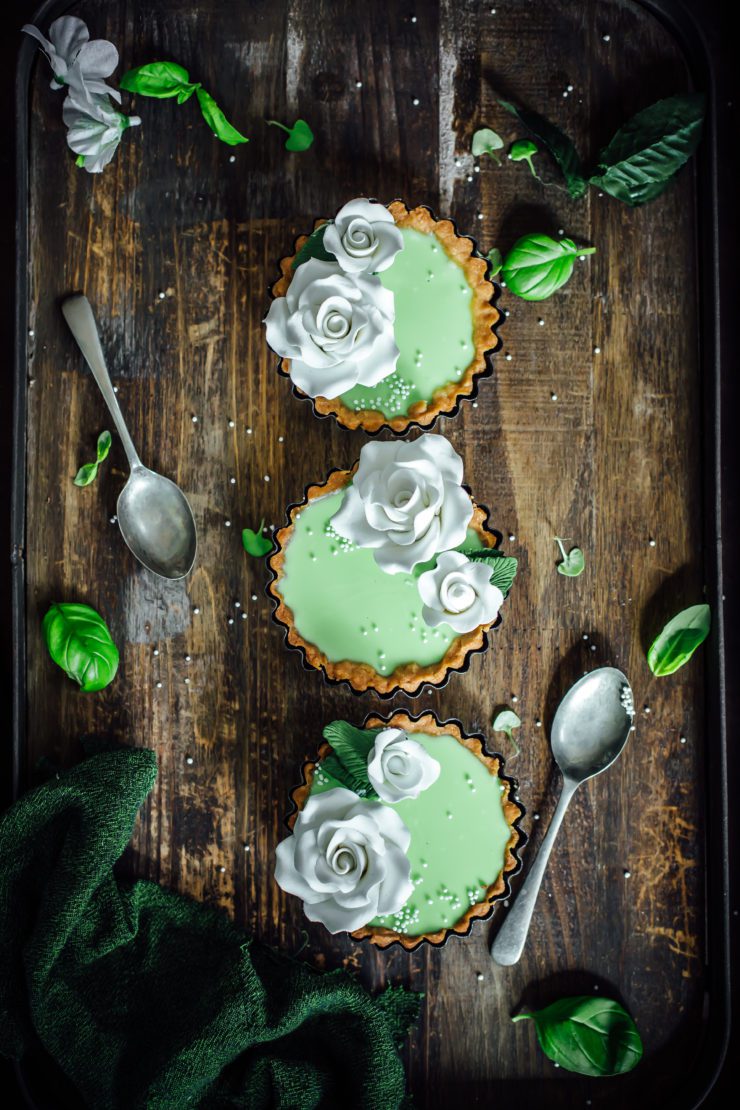
These Panna Cotta Tartlets involve a baked crust. You could go with a biscuit crust as well like this one but I find these hold up much better. Since we want the filling to be rich and creamy and set quickly (with less or no damage to the crust) I use a higher cream to milk ratio. The results are oh so delicious and every bit worth the effort!
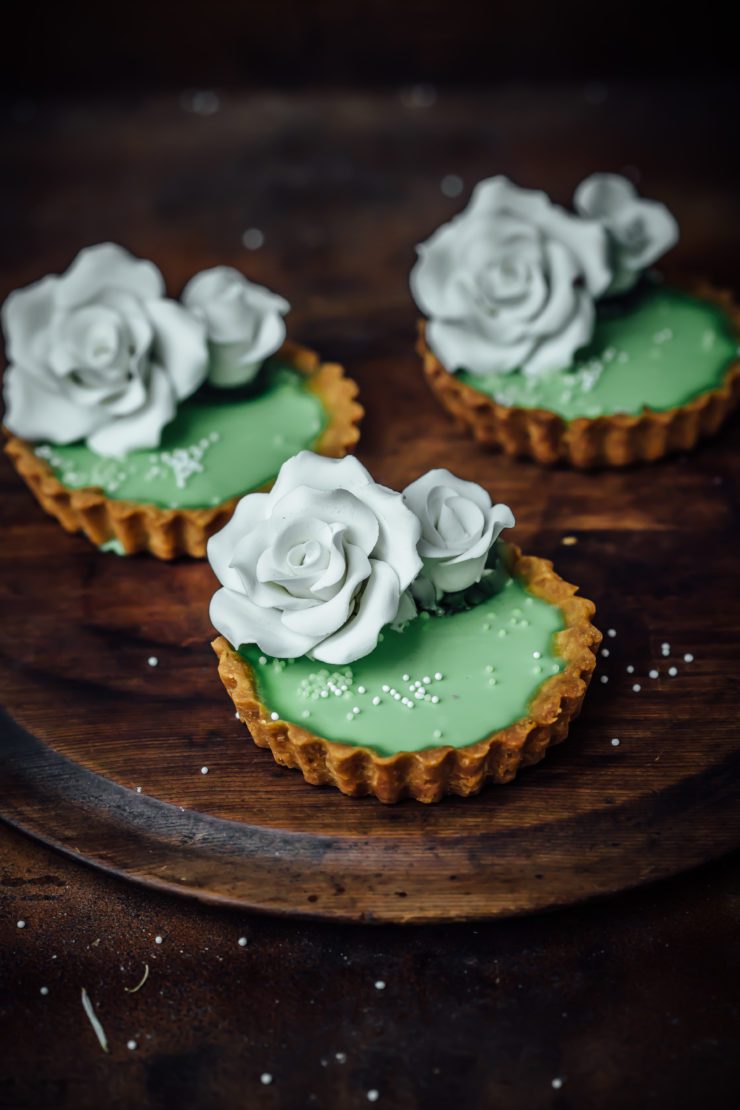
Basil Panna Cotta Tarts
Serves 4
For the pastry
For the filling
300 ml thickened cream
100 ml full cream milk
5-6 fresh basil leaves
1/4 cup castor sugar (more if you like it sweeter)
2 teaspoons powdered gelatine
green gel food colour (optional)
To make the pastry, process the flour, icing sugar and butter in a food processor until mixture resembles fine breadcrumbs. Add the egg yolk and process until mixture just comes together. Gently knead on a lightly floured surface until smooth. Shape into a disc. Cover with plastic wrap and place in the fridge for 15 minutes to rest.
Divide the dough into 4 parts. With your fingers, press the dough along the bottom and sides of 4, 10 cm loose bottomed pans to form an even crust. Trim edges. Place in the fridge for 30 minutes to rest.
Meanwhile, make the filling. Place the cream and milk in a heavy bottomed saucepan along with the fresh basil leaves. Bring to a slight boil (do not boil). Remove from heat and leave aside for 15 minutes. to allow basil leaves to infuse flavour into the milk-cream mixture. Remove the basil leaves with a spoon and discard.
Sprinkle gelatine onto the milk-cream mixture and leave to bloom for 5 minutes. Heat the pan again over slow heat, stirring occasionally until gelatine has completely dissolved. Remove from heat. Add the sugar and food colour (to your desired intensity) if using and allow the filling to come to room temperature (this allows the filling to set quickly once refrigerated and prevents the crust from getting soggy).
Preheat oven to 200 degrees C (180 degrees C fan-forced). Place the tart pans on a baking tray. Line with baking paper and fill with pastry weights or dried rice or beans. Bake in preheated oven for 10 minutes. Remove paper and weights and bake for a further 10-15 minutes or until pastry is fully cooked and golden. Remove from oven. Cool to room temperature.
Once tart shells have cooled down completely, carefully pour the filling into the shells. Place the baking tray with the tart shells into the refrigerator to set. When ready to serve, garnish with edible flowers/candied basil/white chocolate chips. Serve chilled.



